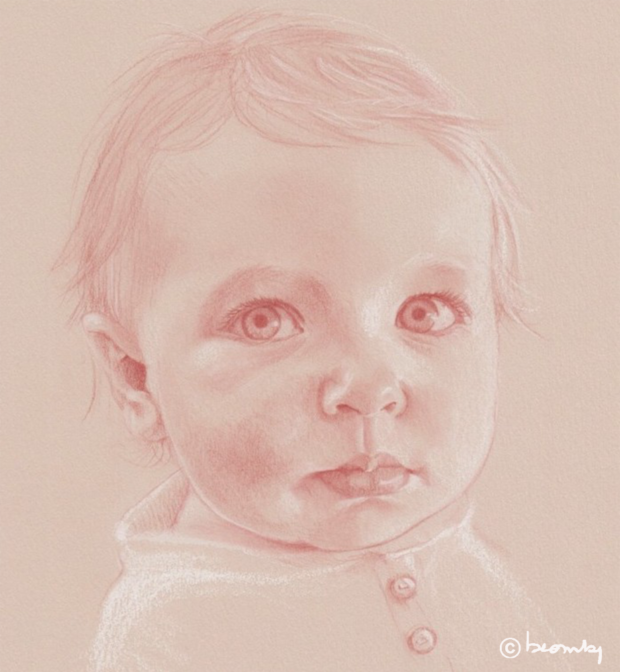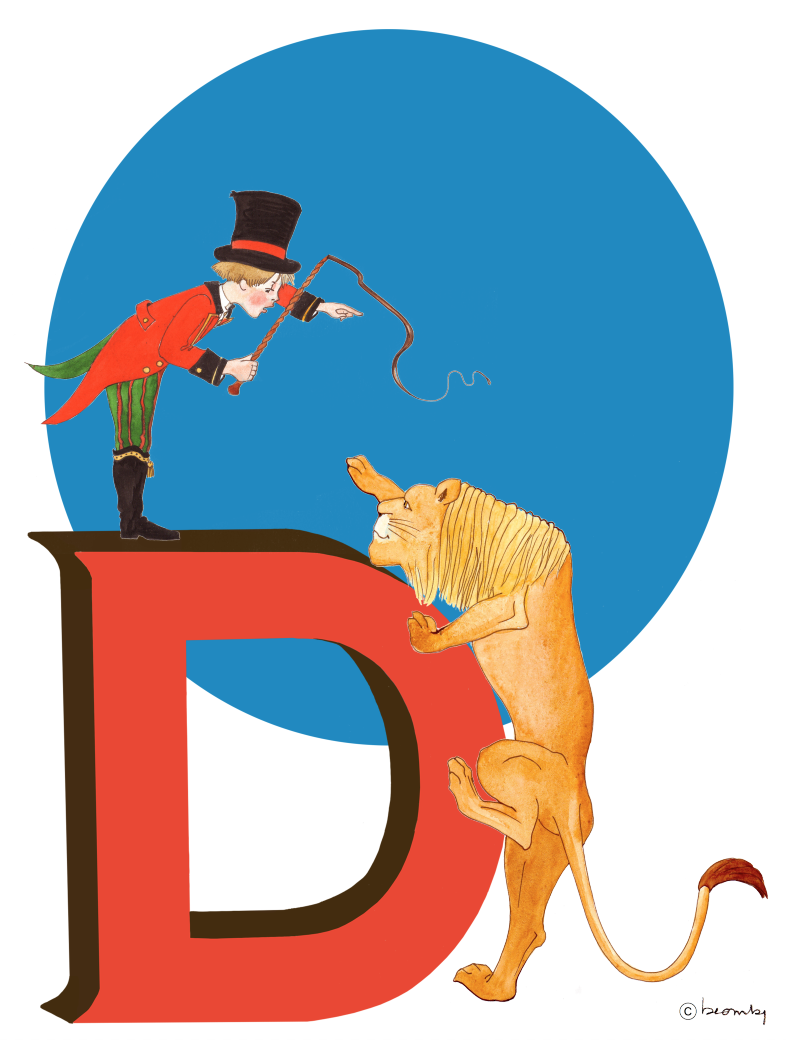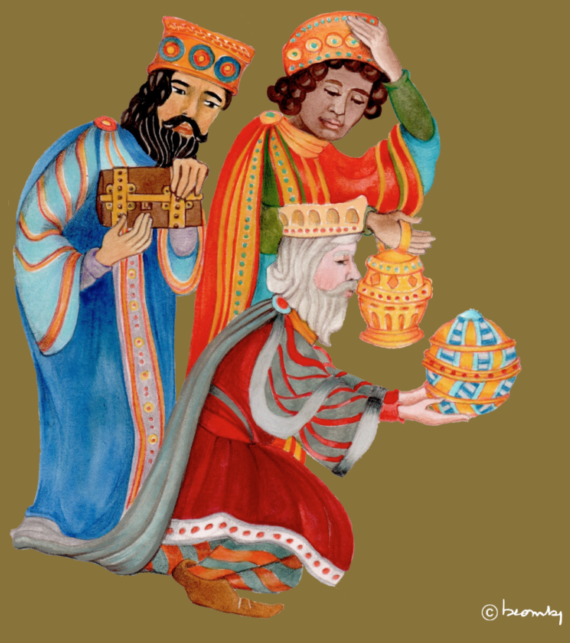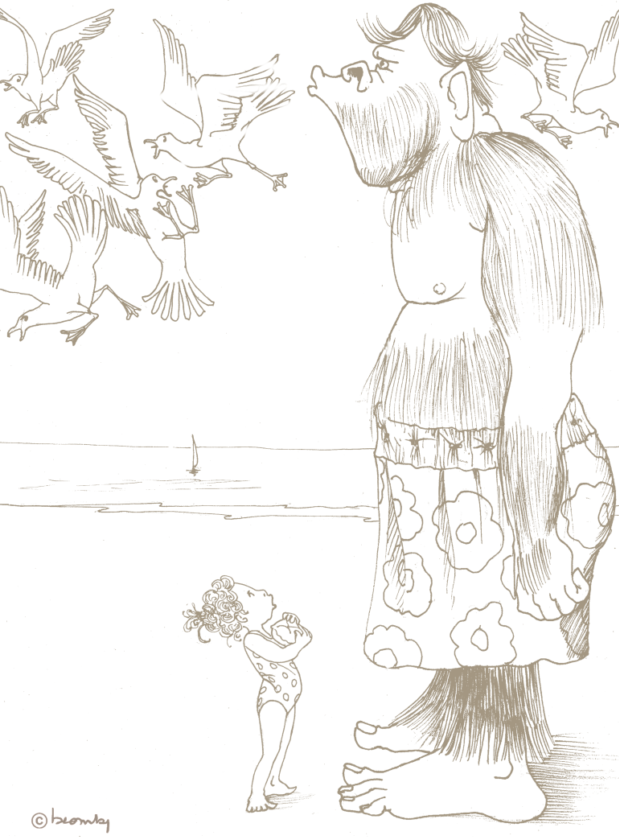Brigitte Comby’s Portfolio
This is my creative world.
Introduction
As you will see, portraits, particularly of children, take pride of place.
I enjoy not only sketching them, but also imagining them in a variety of serious or funny situations, examples of which you will find in the illustrations I present here.
The ones connected with religion are works realised some time ago for adults and children. The starting point is the traditional link in iconographic art between symbol and religion.
The other techniques that I like using come round from time to time.

Introduction
As you will see, portraits, particularly of children, take pride of place.
I enjoy not only sketching them, but also imagining them in a variety of serious or funny situations, examples of which you will find in the illustrations I present here.
The ones connected with religion are works realised some time ago for adults and children. The starting point is the traditional link in iconographic art between symbol and religion.
The other techniques that I like using come round from time to time.

Portraits
As exact a likeness as possible
As exact a likeness as possible
My fascination for faces
When I was starting out, the 17th century painter Antoine WATTEAU fascinated me, with the lively, round and sensual quality of his line. I spent masses of time scrutinising the amazing freshness of his facial sketches. How could I resist following his example, however austere and demanding? I have never completely thrown off this fascination.
What is exciting in portrait painting, is obviously getting a good likeness, but even more, finding the sparkle in the eyes.
Each portrait is unique
Each one of us has a unique way of looking at people and objects. As children we have this look, and with age nothing really changes. When working on a portrait, I try to conjure up this unique light in the eyes.
I have at my disposal many different materials:
- sanguine,
- trois crayons,
- dry pastel,
- graphite,
- charcoal,
- coloured pencils,
- Venetian medium,
- acrylic,
- mixed techniques,
all the classics for painting portraits.
Illustrations for children
Like any draughtsman, I process the picture, I make it my own.
Like any draughtsman, I process the picture, I make it my own.
An illustration for children conjures up a fantasy world.
It can depict:
- a landscape,
- a portrait,
- animals,
- plants,
- objects or whatever else.
Transposed reality
All the treated themes are transposed into a parallel reality, where gracefulness, poetry, or a laugh become major features.
I have great fun mixing long-acquired techniques:
- watercolour,
- dry pastel,
- pencils,
- brushes of all types,
- felt-tips, ink,
- and more recent digital techniques.

Portraits

As exact a likeness as possible
My fascination for faces
When I was starting out, the 17th century painter Antoine WATTEAU fascinated me, with the lively, round and sensual quality of his line. I spent masses of time scrutinising the amazing freshness of his facial sketches. How could I resist following his example, however austere and demanding? I have never completely thrown off this fascination.
What is exciting in portrait painting, is obviously getting a good likeness, but even more, finding the sparkle in the eyes.
Each portrait is unique
Each one of us has a unique way of looking at people and objects. As children we have this look, and with age nothing really changes. When working on a portrait, I try to conjure up this unique light in the eyes.
I have at my disposal many different materials:
- sanguine,
- trois crayons,
- dry pastel,
- graphite,
- charcoal,
- coloured pencils,
- Venetian medium,
- acrylic,
- mixed techniques,
all the classics for painting portraits.
Illustrations for children

Like any draughtsman, I process the picture, I make it my own.
Like any draughtsman, I process the picture, I make it my own.
An illustration for children conjures up a fantasy world.
It can depict:
- a landscape,
- a portrait,
- animals,
- plants,
- objects or whatever else.
Transposed reality
All the treated themes are transposed into a parallel reality, where gracefulness, poetry, or a laugh become major features.
I have great fun mixing long-acquired techniques:
- watercolour,
- dry pastel,
- pencils,
- brushes of all types,
- felt-tips, ink,
and more recent digital techniques.

Religious illustrations
Symbols and their importance in religious art, and the force of Holy Scripture through imagery.
Large frescoes for Advent and Easter
I was very lucky to devise and realise some large frescoes on Advent and Easter themes, in a parish church in the Yvelines. With help from a specialist in Paleochristian and Medieval art, I discovered the importance of symbolism in religious art, and the full force of the holy scriptures through imagery.
An important source of inspiration for me.
Women’s place in church, subject of a permanent exhibition in the Abbaye aux Dames in Caen.
We worked together for many years with the publishers Editions CRER and Bayard Presse for the catechism, and Prions en Eglise (let’s pray in church).
Also, I realised 18 tapestry cartoons for a series of large embroideries on the theme of women’s place in church, which can be seen today as a permanent exhibition in the nave of the Abbaye aux Dames in Caen.
Pictures and cards, meaningful creative objects.
Today I do things differently, but in the same spirit as before, proposing pictures and cards around religious subjects.
Line drawings, which can be coloured in by young and old alike.
Watercolours or gouaches to be hung on a wall in a frame, in the form of cards to offer, or even to hang up in the festive season.
Other techniques
Sometimes I’ll switch to something different.
Sometimes I’ll switch to something different.
Lithography
Lithography is an old friend, always full of surprises and subtleties you can’t put aside. You have to adopt a particular language, and you can’t take it lightly. Once we’re in place, we take off every time for a fascinating journey.
Still life
I’ve always liked the intimist and ephemeral aspect of still life. How many times have I caught myself being taken by the same emotions while looking at the still lifes of Jean-Baptiste Chardin? A mentor, who provokes thinking and looking. And imitating.
Watercolour
I love going from time to time on a sketching trip. Watercolour is fantastic for it, it seems so simple, but think again, it needs a lot of humility and know-how. Sometimes, miraculously, I get it right!
It works cyclically and with great intensity, and after, I go back to my portraits in progress, or to the urgency of focusing on my illustrations.

Religious illustrations

Symbols and their importance in religious art, and the force of Holy Scripture through imagery.
Large frescoes for Advent and Easter</4>
I was very lucky to devise and realise some large frescoes on Advent and Easter themes, in a parish church in the Yvelines. With help from a specialist in Paleochristian and Medieval art, I discovered the importance of symbolism in religious art, and the full force of the holy scriptures through imagery.
An important source of inspiration for me.
Women’s place in church, subject of a permanent exhibition in the Abbaye aux Dames in Caen.
We worked together for many years with the publishers Editions CRER and Bayard Presse for the catechism, and Prions en Eglise (let’s pray in church).
Also, I realised 18 tapestry cartoons for a series of large embroideries on the theme of women’s place in church, which can be seen today as a permanent exhibition in the nave of the Abbaye aux Dames in Caen.
Pictures and cards, meaningful creative objects.
Today I do things differently, but in the same spirit as before, proposing pictures and cards around religious subjects.
Line drawings, which can be coloured in by young and old alike.
Watercolours or gouaches to be hung on a wall in a frame, in the form of cards to offer, or even to hang up in the festive season.
Other techniques

Sometimes I’ll switch to something different.
Sometimes I’ll switch to something different.
Lithography
Lithography is an old friend, always full of surprises and subtleties you can’t put aside. You have to adopt a particular language, and you can’t take it lightly. Once we’re in place, we take off every time for a fascinating journey.
Still life
I’ve always liked the intimist and ephemeral aspect of still life. How many times have I caught myself being taken by the same emotions while looking at the still lifes of Jean-Baptiste Chardin? A mentor, who provokes thinking and looking. And imitating.
Watercolour
I love going from time to time on a sketching trip. Watercolour is fantastic for it, it seems so simple, but think again, it needs a lot of humility and know-how. Sometimes, miraculously, I get it right!
It works cyclically and with great intensity, and after, I go back to my portraits in progress, or to the urgency of focusing on my illustrations.
Superbabalicious’s whims
Stories for kids
Who is Superbabalicious?
With my different skills, you’ll have understood that I sometimes swap my “Painter Brigitte Comby”’s smock for the Gardener’s overalls, or even the Cook’s apron.
That’s how the name Superbabalicious was born, given by my family to name this ability to swap one creative art for another. Superbabalicious is a formula almost as magical as that of Mary Poppins, this everyday enchantress.
The Superbabalicious Me takes out of her basket every kind of tool:
- pencils,
- paint,
- brushes,
- Photoshop,
- screwdriver,
- hammer, spade, spoon and pots…
She attempts every day to make her universe a little more magical, happily mixing techniques honed through experience, with a strong desire to share this universe.
Why children’s stories, and who are they for?
As a child, I had an insatiable appetite for being told stories, appetite that was thankfully quickly satisfied. I could read and write as soon as I was five.
Today, I’m the one telling the stories, which I invent and express in my illustrations
Stories for kids
Who is Superbabalicious?
With my different skills, you’ll have understood that I sometimes swap my “Painter Brigitte Comby”’s smock for the Gardener’s overalls, or even the Cook’s apron. That’s how the name Superbabalicious was born, given by my family to name this ability to swap one creative art for another. Superbabalicious is a formula almost as magical as that of Mary Poppins, this everyday enchantress.
The Superbabalicious Me takes out of her basket every kind of tool:
- pencils,
- paint,
- brushes,
- Photoshop,
- screwdriver,
- hammer, spade, spoon and pots…
She attempts every day to make her universe a little more magical, happily mixing techniques honed through experience, with a strong desire to share this universe.
Why children’s stories, and who are they for?
As a child, I had an insatiable appetite for being told stories, appetite that was thankfully quickly satisfied. I could read and write as soon as I was five.
Today, I’m the one telling the stories, which I invent and express in my illustrations.

